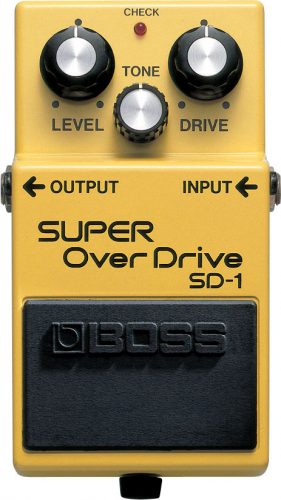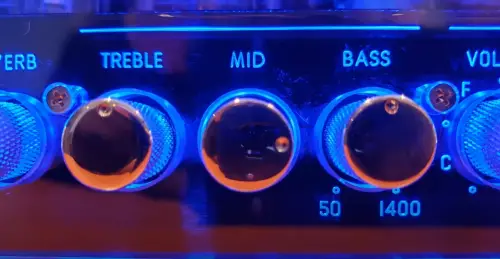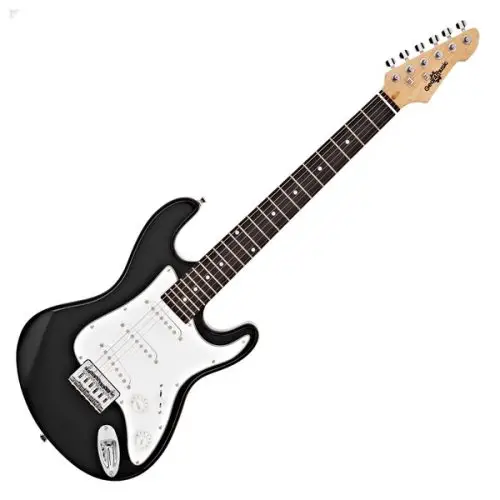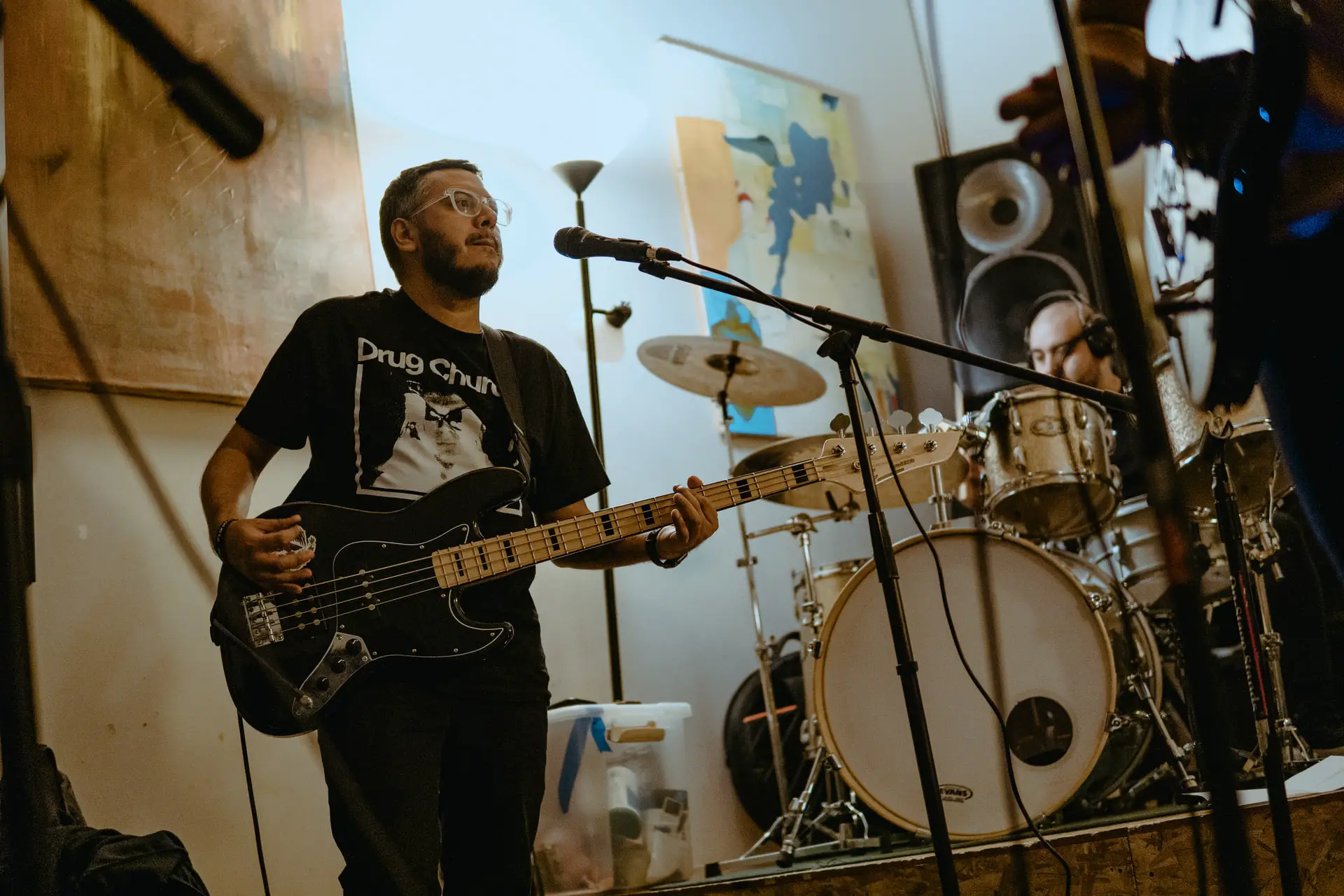Clean distortion is when you play with distorted effects but still sound crunchy and clean. There are no unwanted noises and fuzz – suitable when playing solos and leads for classic rocks and blues.
Many people often say, the sound of a guitar depends on the hands of the guitarist. I don’t fully agree with this because gear selection and learning how to use them correctly will help improve your sound by a lot.
For my first electric guitar, I bought a cheap guitar set that came with an amp. It’s a cheap amp and sounded horrible. No matter how much I practised it still sounded bad (nowhere near the sound I heard from YouTube videos).
After getting a new amp and overdrive pedals only do I get much better sound. The guitar was cheap but the amp was decent – yet the sound improved by a lot.
I personally like to play classic rock with clean distortion – I don’t like distortion that’s too heavy and fuzzy.
Throughout my journey, I have searched for different ways to achieve that clean distortion. In this article I will share with you 5 improvement tips to get a clean distortion and also talk more detail into amp settings and pedals.
By the end of this article, you should have a much cleaner distortion without noise.
5 Tips To Get Clean Distortion
1. Practice muting
It’s important to practice muting and mute the unwanted strings when playing with distortion – this ensures no accidental sound and noise.
Before spending any money on buying new gears, practice your muting thoroughly. Playing distortion without proper muting techniques will never sound as good.
Generally, you hang your thumb over the guitar neck and slightly touch the unwanted strings to mute them. You don’t have to hold them tight – just slightly touch them.
This ensures the tone you produce is accurate and you don’t have to worry about being careful not to accidentally ring the string – if it’s muted, it won’t sound.
Muting technique is mandatory to play distortion well. You can learn muting from many YouTube videos.
2. Adjust amp settings for clean distortion
To get a clean sounding distortion, adjust your amp by maxing the mids and switch to bridge pickup. This will make your distortion sound brighter, fuller and cleaner.
I will discuss the exact amp settings in the later section, but you can totally improve your distortion sound by adjusting a couple of knobs on your amp and electric guitar.
This of course depends on the amp that you have – cheaper and smaller amps usually have poorer speakers that will not sound as good.
As long as you don’t have a cheap amp (like me) that comes 1-set with your guitar, then I think you should be good.
Remember, a better amp is always preferable and more impactful than a better guitar. If you have some budget, upgrading your guitar amp is definitely a worthy investment.
3. Use overdrive pedal instead of distortion (or fuzz)
Use an overdrive pedal to create a clean distortion that’s less intense. Out of all the gain pedals, the overdrive pedal provides the least distortion – suitable for classic rock leads and solos.
Most people will get a distortion pedal for distortion – and I understand that. The name literally implies it’s for distortion.
However, overdrive, distortion and fuzz pedals are all gain pedals that you could use to create dirty guitar sound.
Overdrive pedal being the least intense, followed by distortion and fuzz. Fuzz is only suitable for heavy metal with a really dirty sound.
I personally use the Boss SD-1 overdrive pedal. They are not so intense, provide great sound and are only about $50. And not to mention Boss is a reputable brand.
Related article: Clean Vs Dirty Guitar Sound: What Is It & How To Achieve

4. Use noise suppressor pedal
Noise suppressor pedal is great for silencing unwanted sound and static fuzzy noises – helping you create accurate and clean sounding distortion.
If you can hear static fuzzy noise even when you are not plucking any string, then a noise suppressor pedal should solve that.
Make sure you place time based pedals after the suppressor pedal and gain pedals like overdrive or distortion before the suppressor.
This way your time based effects like delays are not affected and your dirty gain pedals are noise-less and clean.
Here’s a YouTube video showing you how a noise suppressor pedal works. I remember learning from this video as well.
5. Upgrade your gear
You can upgrade your gear with more controls to specifically tune how dirty or clean your distortion should be.
More expensive gears like amps and pedals tend to have more controls over the cheaper ones. For example, cheaper amps may not even have the EQ controls – which are crucial in adjusting distortion sound.
Some overdrive pedals also allow you to control the levels of dry / wet signal going into the amp. You can tweak these settings to get the accurate distortion sound you want.
Can You Get Distortion With Only Amp? (No Pedal)
You are not required to get a pedal to achieve distortion. Some amps have 2 or more channels – 1 for clean and another for overdrive (for distortion). Simply switch the channel to achieve distortion.
If you happen to have an amp with a single channel (only clean), then you can still get distortion effects by adjusting the EQ controls – maximum mid, lower treble, higher gain and lower master volume.
I will discuss the amp settings for distortion in more detail now.
Amp Settings For A Clean Distortion
To get the best clean distortion, you need to increase the mids to the highest and use bridge pickup. Keep treble and bass at 12 and adjust the guitar volume knob as needed for your preference.
The mids EQ knob is the most important control for distortion. For a clean ‘classic-rock’ distortion, you should maximize the mids and lower down the gain.
For a dirty ‘metal’ distortion, you should minimize mids and increase the gain. Note, amps usually refer to ‘gain’ as ‘volume’ and the actual loudness as ‘master volume’.

How To Switch Between Clean & Distortion (While Playing)
Throughout this article, I have been describing ways to get distortion sound that’s accurate, not so intense and with less noise.
If I somehow misunderstood you and you are asking how to switch between clean and distortion, then I also got your covered (it’s a very common question among newer guitarists).
Here are 3 ways to switch between clean and distortion – while playing.
- Switch amp channel. Some amps provide you with multiple channels – 1 for clean and the other for dirty (distortion). You can switch between clan and distortion with a button and some even allow you to switch with foot.
- Turn the volume knob down. You can also control the level of distortion through the volume knob of your guitar. Lower volume means lower signals – this will reduce the amount of distortion.
- Switch off / on your pedal. If you have a distortion or overdrive pedal in your rig, then you can switch to a clean or distortion sound by turning on / off the pedal using your foot. Remember, when using a distortion pedal, your amp settings should be clean. So when you turn off the pedal, you will get back the clean sound.

A guitar’s volume knob controls the guitar signal – this can be used to reduce distortion as well.





